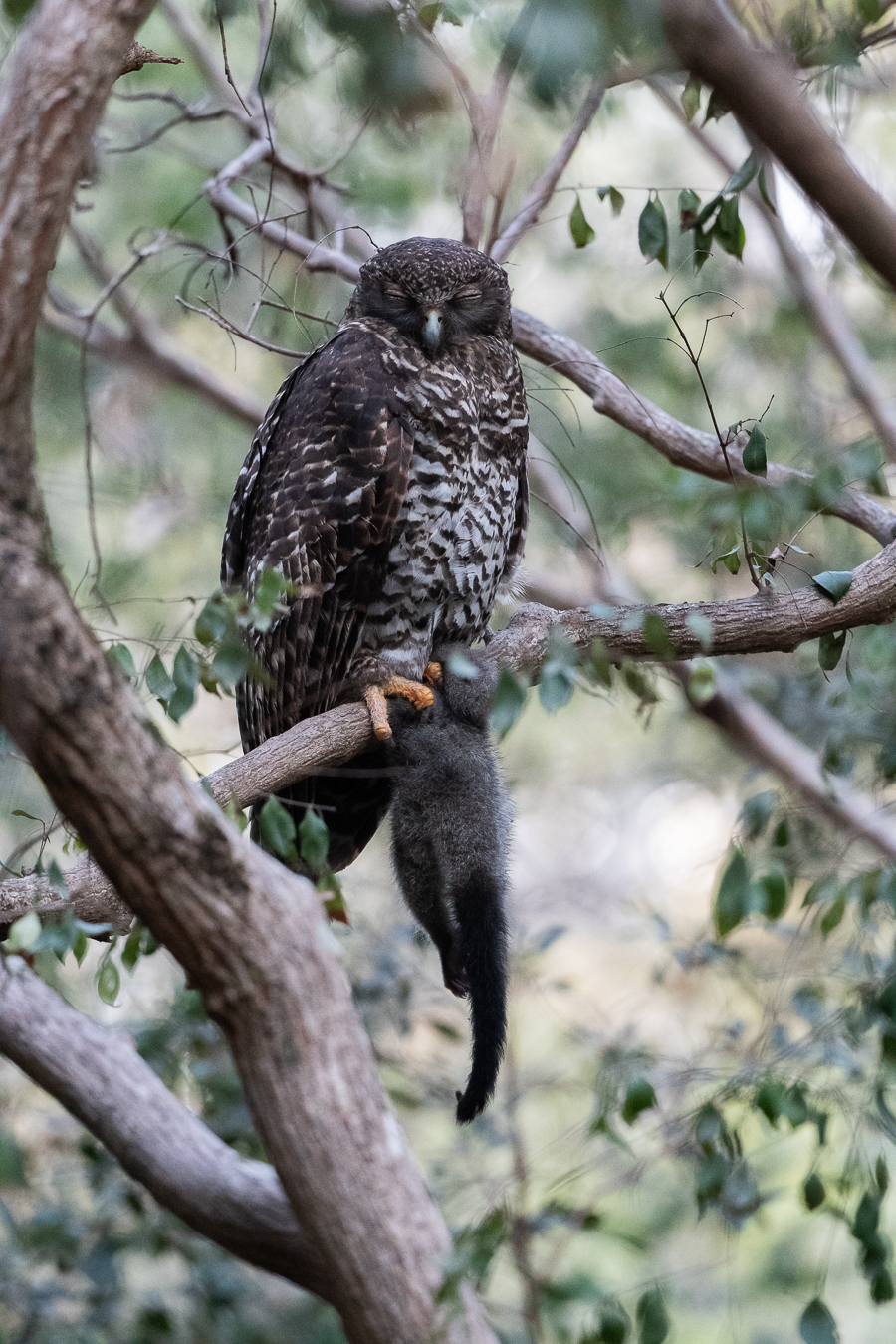The Powerful Owl is a very impressive bird. A common reaction people have when they see one for the first time is “Wow!” Standing approximately 65cm tall with a wingspan of about 140cm they are our largest nocturnal bird – big enough to snatch a possum or a flying fox for dinner.
If a Powerful Owl is staring at you, it’s like its piercing eyes will burn two holes straight through you! As well as the large yellow eyes and v-shaped pattern on their feathers, they have huge yellow feet with a seriously decent set of talons.

Powerful Owls inhabit open forests and woodlands, and use sheltered gullies with a dense understorey, especially along watercourses, to roost in during the day. Powerful Owls are also found in urban and peri-urban areas particularly in the more leafy suburbs and also large bushland properties such as those owned by Land for Wildlife members.
Birdlife Australia’s Powerful Owl Project engages volunteers and landowners to help determine the distribution and numbers of Powerful Owls and to monitor Powerful Owl nesting success.
A number of Land for Wildlife members have been regularly monitoring Powerful Owls on their properties and we invite more of you to become involved. We are also looking for large properties to deploy acoustic monitoring devices to pick up calls of Powerful Owls and their chicks. They have a loud “whooooo…..hooooo” call. Regardless of whether you decide to participate on an ongoing basis, we would really like to hear from you if you have seen or heard Powerful Owls on your property, or have suitable habitat for them.
We are particularly keen to know if you have a Powerful Owl nest site or a potential nest site on your property. Powerful Owls require large hollow bearing trees to nest in. These trees are invariably eucalypts with a trunk diameter of at least 75cm and have a large hollow with an entrance of about 25cm or more – big enough to fit two growing owl chicks and their mum inside.
To learn more about Powerful Owls visit https://birdlife.org.au/bird-profiles/powerful-owl/
For information about Birdlife Australia’s Powerful Owl Project visit https://birdlife.org.au/projects/powerful-owl-project/
Please email us at powerfulowl-bris@birdlife.org.au if you would like to join us or to record a Powerful Owl sighting.
Article by Andrew Dinwoodie
Powerful Owl Project Coordinator
Birdlife Australia

Found a feather on the Eurobin falls track, base of Mt. Buffalo